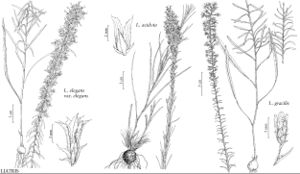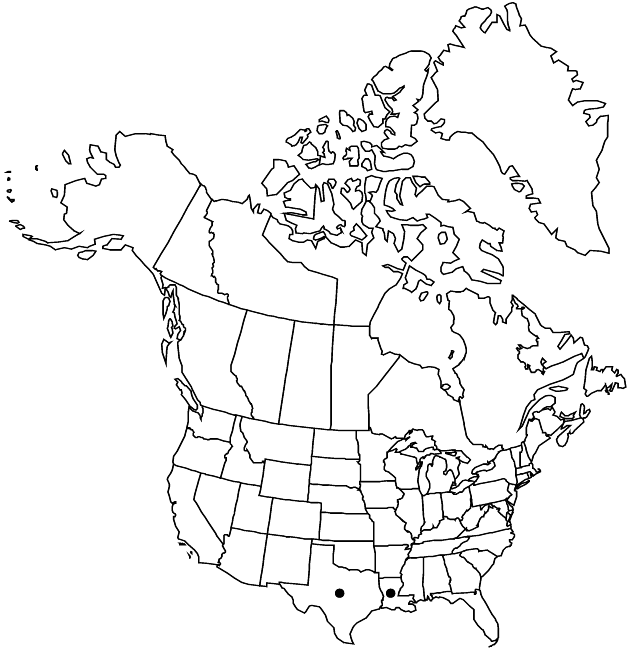Liatris acidota
Boston J. Nat. Hist. 5: 218. 1845.
Plants 20–90 (–130) cm. Corms usually globose to subglobose, sometimes ovoid to elongate. Stems glabrous. Leaves: basal and proximal cauline 3–5-nerved, linear to linear-oblanceolate, 100–400 × 1–3 (–5) mm, gradually reduced distally or abruptly on distal 1/2 of stems, essentially glabrous (bases of basal usually fibrous-persistent). Heads in dense, spiciform arrays. Peduncles 0. Involucres cylindro-turbinate, 6–7 (–10) × ca. 3 mm. Phyllaries in 3–4 series, (often purple) oblong-oblanceolate to oblong-lanceolate, unequal, essentially glabrous, margins with hyaline borders, ciliolate, apices (erect or ± appressed) acuminate to acute. Florets (2–) 3–4 (–5); corolla-tubes glabrous inside. Cypselae 4–4.5 mm; pappi: lengths ± equaling corollas, bristles barbellate to subplumose. 2n = 20.
Phenology: Flowering (Jun–)Jul–Oct(–Nov).
Habitat: Coastal prairies, prairie remnants, wet pine flats, savannas, oak-pine, ditches, roadsides, railroads, sand, sandy and silty loams, clays
Elevation: 0–30 m
Discussion
Selected References
None.
Lower Taxa
"barbellate" is not a number. "subplumose" is not a number."fine" is not a number.

